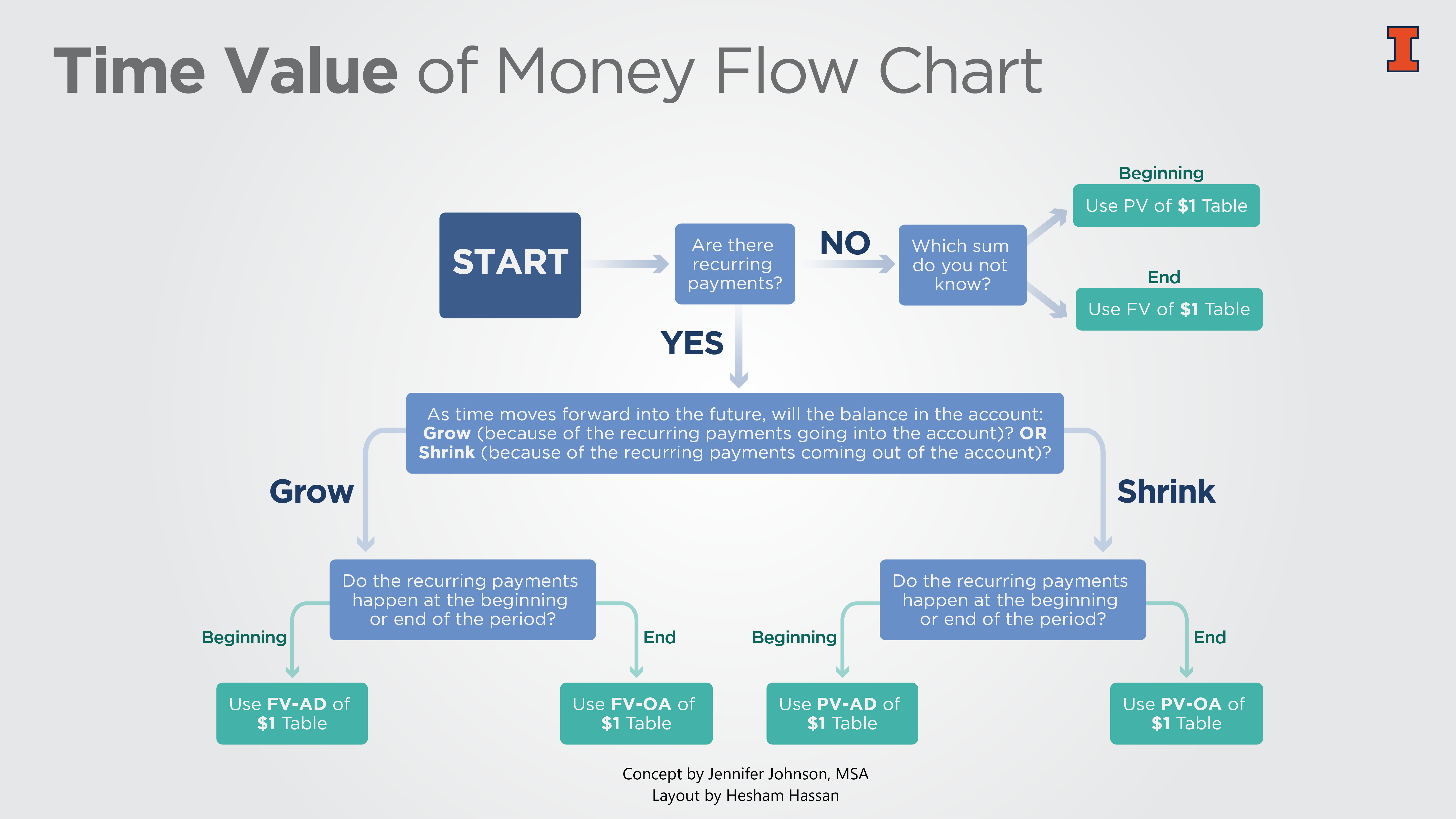There were a few different ways I could have constructed this diagram, but after some trial and error I settled on the following flow. It begins by asking if the problem has recurring payments. If the answer is no, then it asks, “Which sum do you not know?” If the beginning sum is unknown, then the present value of $1 table is used. If the future sum is unknown, then the future value of $1 is used.
If there ARE recurring payments, then the student is asked whether or not the balance in the account will grow or shrink based on the recurring payments going into the account or coming out of the account. Finally, the student is asked when the recurring payments occur: at the beginning of the period or the end of the period. Depending on the answer, the student will arrive at one of the four remaining tables:
- Future value of an annuity due of $1
- Future value of an ordinary annuity of $1
- Present value of an annuity due of $1
- Present value of an ordinary annuity of $1
I’m pretty happy with this diagram, but I also think it needs a bit of tweaking. I discovered this past semester that there are some accounting problems worded such that familiarity with choosing time value of money tables makes using the diagram easier. This is obviously circular for students new to these concepts.
If you like it, feel free to use it. I would appreciate suggestions for improvement.

Many thanks to Hesham Hassan for laying out the design in an attractive manner.